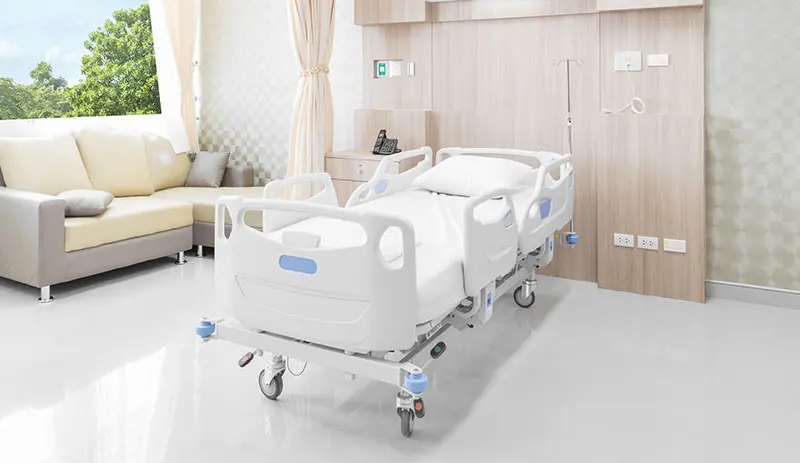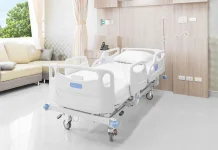IUVA Healthcare/ UV Working Group
Troy Cowan IUVA Healthcare/UV Working Group facilitator
It’s been sad lately to see the “fake news” and erroneous information floating around about UV-C. It was one thing to be in discussions with a senior IUVA member and disagreeing on whether or not UV-C causes skin cancer (per FDA, that’s a “no”1). It’s yet another for a peer-reviewed German healthcare journal to publish that 80 J/cm2 of UV-B is less harmful than 40 mJ/cm2 of UV-C2 (that’s also a “no” based on NIOSH exposure guidelines3). And it’s still another for a six-time Oscar-winning actor to star in a movie that demonizes UV as ionizing radiation that would kill all living things on Earth if the ozone layer was destroyed4 (also in error5). Like we said … fake news.
To make things worse, EPA is stepping up use of backdoor enforcement efforts of labeling regulations to hinder import and production of all types of air disinfection devices (including viable UV-C units), placing onerous burdens on importers to address allegedly deficient claims before the devices and components can clear Customs and Border Protection. This forces the importers to deal with heightened shipping costs and regulatory restrictions, which complicate circumstances under which allegedly misbranded products may be relabeled.6
EPA actually has gone on record with pronouncements such as “EPA does not consider import categorization, consistent with FDA requirements, to be product labeling under FIFRA. An FDA requirement to declare these UV lamps as ‘germicidal lamps’ during the importation process does not mean that this claim is acceptable on labels or labeling for all devices that contain a UV lamp.”7 In other words, just because FDA says a lamp is germicidal by definition, that doesn’t mean EPA accepts the validity of the label – but EPA can use the FDA-mandated labels on a box of imported UV-C lamps (i.e., bulbs) to get them impounded by Customs as improperly documented “devices” under FIFRA. It’s nuts. And, it’s bad news on top of the fake news.
So, is there any the good news out there? Yep!
- The number and credibility of studies and reports that show UV-C as effective in inactivating SARS-CoV-2 are increasing. In one study in the Journal of Hospital Infection, UV-C was found to be effective in inactivating SARS-CoV-2 both on environmental surfaces and in airborne viral particle forms.8 Even the CDC advocates UV-C upper-room ultraviolet germicidal irradiation (UVGI) as one of several effective ventilation interventions that can help reduce the number of infectious viral particles (to include SARS-CoV-2) in the air.9
- With the publication of the “Special Section on Ultraviolet Technologies for Public Health” in peer-reviewed JOURNAL OF RESEARCH OF NIST, it now is much easier to research how much UV-C is required to inactivate pathogens across multiple citable resources.10 This includes a citable resource for recommended inactivation values covering 100 pathogens, to include spores, bacteria, protozoa, viruses, algae and other large microorganisms.11
- This information also is becoming more credible and usable thanks to the progress being made in developing several industry consensus standards for measuring UV-C output. A new standard for measuring spectral UV irradiance at a given distance (LM-91) currently is out for review and is expected to be published in Quarter 1 of 2022. A similar standard for measuring UV LED output (LM-92) also is out for public review and should be published in Quarter 1 of 2022.12 In addition, other standards are in development covering how to assess low-pressure mercury bulbs, Far UV-C sources, radiometers and UV detectors, and pulsed Xe UV sources. All are the result of ongoing collaborative efforts between IUVA and the Illuminating Engineering Society, and all will be considered for adoption into the American National Standards Institute (ANSI) standards inventory.
- Measuring the UV output is one thing; measuring the effectiveness and efficacy of its delivery by a UV disinfection or air treatment device against pathogens is yet another. That’s being addressed in joint efforts between IUVA and ASHRAE, as well as being undertaken with the leadership of ASHRAE’s Technical Committee 2.9 – Ultraviolet Air & Surface Treatment. The current two efforts include the following:
o 185.3P Method of Testing In-Room Devices and Systems for Microorganism Removal or Inactivation in a Chamber
o 185.4 Method of Testing In-Room Ultraviolet Devices and Systems for Microbial Inactivation on Surfaces in a Test Room (TPC charter recently approved)
And, that’s just the mundane stuff. The cutting-edge efforts are even more exciting. These include the following:
- The Far UV-C Task Force is about to publish an updated white paper on the potential efficacy and advantages of Far UV-C as potentially being safe for use in occupied areas, enabling broader and longer duration disinfection treatments of the surfaces and ambient air in places like classrooms, offices and passenger terminals, where a process to continually reduce pathogens would be most advantageous.13
- Within the Far UV-C white paper is a newly proposed protocol for the standardized measurement of ozone production, which could be developed into a standard for assessing ozone output of UV devices as part of a consumer safety initiative.14
- And then, there’s the new Product Labeling initiative underway to develop and vet voluntary product labels that could be used to display test results, product descriptions and key product labels in a standardized way, which would minimize – if not eliminate – regulatory mislabeling confusion.15
Is there some good news about UV-C and what it can do? You bet. Many thanks are due to each and every one of you who are helping us get that word out to those who can most benefit, including the healthcare sector and the general public. You’re helping to save lives.
References
- FDA, “Ultraviolet (UV) Radiation,” current as of 18 Aug. 2021 (https://www.fda.gov/radiation-emitting-products/tanning/ultraviolet-uv-radiation), last accessed 17 Nov. 2021
- “Review of microbial touchscreen contamination for the determination of reasonable ultraviolet disinfection doses,” published in GMS Hygiene and Infection Control 2021, Vol. 16, ISSN 2196-5226 (https://www.researchgate.net/publication/355853821_Review_of_microbial_touchscreen_contamination_for_the_determination_of_reasonable_ultraviolet_disinfection_doses_Literaturstudie_zur_mikrobiellen_Touchscreen-Kontamination_als_Grundlage_zur_Abschatzun), last referenced 9 Nov 2021
- NIOSH, “A Recommended Standard tor Occupational Exposure to…. Ultraviolet Radiation, (Table I-1),” DHHS (NIOSH) Publication Number 73-11009, dated 1972 (https://www.cdc.gov/niosh/docs/73-11009/pdf/73-11009A.pdf?id=10.26616/NIOSHPUB7311009), last accessed 17 Nov 2021
- “Finch,” starring Tom Hanks, available on Apple TV, viewed on 9 November 2021
- CDC, “Ultraviolet Radiation,” last reviewed 25 Aug. 2016 (https://www.cdc.gov/nceh/radiation/ultraviolet.htm), last accessed 17 Nov. 2021
- Pillsbury article in this issue of mag
- Letter, Pease & Segall, EPA, to Tolsdorf, National Electrical Manufacturers Association, dated April 12, 2021
- Martins, et al., “Disinfection methods against SARS-CoV-2: a systematic review,” Journal of Hospital Infection, 18 Oct. 2021, (DOI: https://doi.org/10.1016/j.jhin.2021.07.014), last accessed 16 Nov. 2021
- CDC, “Ventilation in Buildings,” dated 2 June 2021, (https://www.cdc.gov/coronavirus/2019-ncov/community/ventilation.html), last accessed 16 Nov. 2021
- NIST, “Special Section on Ultraviolet Technologies for Public Health, JOURNAL OF RESEARCH OF NIST,” Volume 126 (2021), (https://www.nist.gov/nist-research-library/journal-research-nist), last accessed 16 Nov. 2021
- Masjoudi, et al., “Sensitivity of Bacteria, Protozoa, Viruses and Other Microorganisms to Ultraviolet Radiation,” (https://doi.org/10.6028/jres.126.021), August 20, 2021, last accessed 16 Nov. 2021
- Email, Miller to Cowan, dtd 16 Nov 2021, subject
“…Update on IES Standards, Please” - Blatchley, et al., “Far UV-C Radiation: An Emerging Tool for Pandemic Control,” pre-publication version, last accessed 16 Nov. 2021
- Ibid.
- IUVA Healthcare/UV Working Group Conference Call, presentation by M. Smith, 17 Oct 2021






